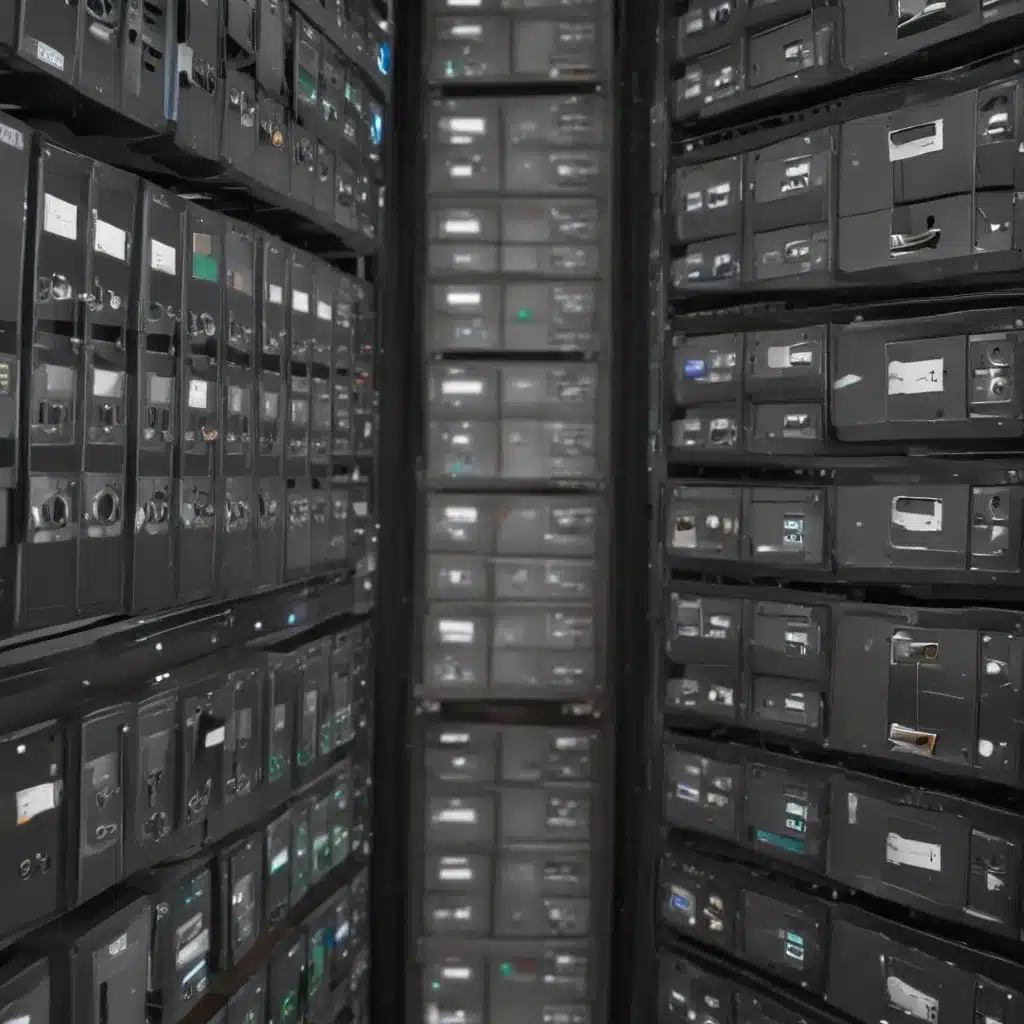As a passionate photographer, I’ve learned the hard way that when it comes to data backup, there’s no such thing as too much redundancy. I’ve had my fair share of hard drive failures, accidental deletions, and corrupted files over the years. And let me tell you, there’s nothing quite as gut-wrenching as realizing you’ve lost years’ worth of irreplaceable memories and hard work.
That’s why I’ve become a bit of a backup evangelist, always preaching the gospel of the 3-2-1 rule: three copies of your data, on two different types of media, with one copy stored offsite. It’s the only way to truly protect yourself from the unexpected. And when it comes to that all-important offsite backup, the options can be downright dizzying.
Cheap Cloud Storage for Offsite Backup
Recently, I was chatting with some fellow data hoarders on Reddit [1] about the best cheap cloud storage options for offsite backup. One person was looking to back up around 14TB of data, and was considering MEGA’s 16TB plan. But as they pointed out, there might be even more budget-friendly options out there.
After scouring the forums, a few cloud storage providers kept bubbling to the top. The darling of the data hoarding community seems to be Backblaze, with their $60/year Personal Backup plan. Sure, it’s Windows-only and you’re locked into their proprietary software, but the price is hard to beat. Another popular choice is Sync.com, which offers a generous 2TB plan for just $8/month.
Now, I know what you’re thinking – “But Pete, won’t my data be vulnerable to hackers or data breaches in the cloud?” It’s a valid concern, for sure. That’s why I always recommend using a zero-knowledge, client-side encrypted cloud backup solution like Arq or Duplicacy. That way, even if the cloud provider gets hacked, your data will be safe and sound.
Avoiding the Perils of RAID
Of course, cloud storage isn’t the only way to handle offsite backup. Many folks opt for good old-fashioned hard drives. But as I’ve learned the hard way, you can’t just throw your data on a RAID array and call it a day. [2]
You see, RAID stands for “Redundant Array of Independent Disks,” and it’s designed to provide data redundancy in case of disk failure. But here’s the rub – RAID is not a replacement for a proper backup system. If you accidentally delete a file, or a virus corrupts your data, that corruption will be mirrored across all the drives in your RAID. And if you experience a catastrophic failure, like a power surge or a fire, your entire RAID array goes up in smoke.
That’s why I always keep my RAID systems separate from my backup strategy. I use a RAID 5 array for my primary storage, but I also have a set of external hard drives that I religiously back up to using Time Machine. And to cover my bases, I have an offsite backup stored in a safe deposit box. It’s the digital equivalent of keeping your valuables in a fireproof safe.
The Beauty of Archival Storage
Now, when it comes to long-term data preservation, I’ve found that good old-fashioned physical media can’t be beat. I’m talking about the kind of stuff that’s designed to last decades, not the flimsy USB drives that seem to fail after a year or two.
Enter the world of archival-grade storage, like LTO (Linear Tape-Open) tapes. These things are built like tanks, with a lifespan of 30 years or more. And the best part? You can pick up a 6TB LTO-8 tape for around $50. Sure, you’ll need a tape drive to read and write them, but the peace of mind is priceless.
But tape isn’t the only game in town when it comes to long-term archival storage. There’s also the intriguing world of optical discs, like Blu-ray. While the capacity may not be as massive as tape, a good quality Blu-ray disc can last for up to 100 years. And let’s not forget the good old DVD – sure, it may be a bit long in the tooth, but a properly stored DVD can last for decades.
Putting It All Together
Ultimately, the perfect backup strategy is going to be a unique blend of solutions, tailored to your specific needs and budget. For me, it looks a little something like this:
- Primary storage: RAID 5 array
- Onsite backup: Time Machine to external hard drives
- Offsite backup: Cloud storage with client-side encryption
- Long-term archive: LTO tapes and Blu-ray discs
And you know what? It’s a little complex, sure. But when it comes to safeguarding your data, I firmly believe that a little extra effort is worth it. After all, the alternative is the gut-wrenching realization that you’ve lost something truly irreplaceable. And trust me, you don’t want to go through that.
So, fellow data hoarders, take it from someone who’s been there – don’t skimp on your backup strategy. Embrace the redundancy, diversify your storage options, and rest easy knowing that your precious data is safe and sound. Your future self will thank you.
References:
[1] https://www.reddit.com/r/DataHoarder/comments/156xsfq/cheapest_cloud_storage_for_offsite_backup/
[2] https://www.petemarovichimages.com/never-use-a-raid-as-your-backup-system/
[3] https://github.com/borgbackup/borg/issues/2177
[4] https://community.spiceworks.com/t/veeam-backup-local-then-to-offsite-options/966500
[5] https://www.backupassist.com/blog/onsite-vs-offsite-backup-recovery-which-is-best-for-your-business
[6] https://www.techtarget.com/searchdatabackup/feature/How-does-off-site-backup-stack-up-against-cloud-backup
[7] https://forums.veeam.com/veeam-backup-for-microsoft-365-f47/o365-backup-on-premise-vs-cloud-t56623.html
[8] https://aws.amazon.com/s3/storage-classes/glacier/













